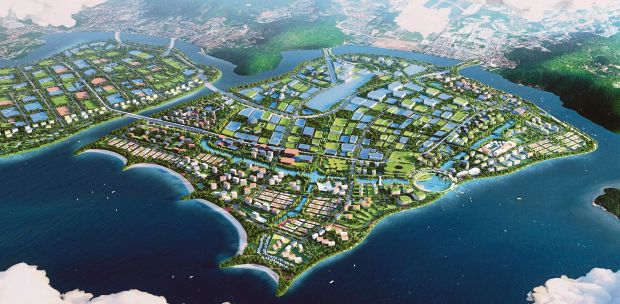FIVE-year economic plans originated from the Russians, who practised central planning, and these were imported into many developing economies, including Malaysia.
The culture of having development plans is strong here because of the deep belief that the government directly influences the pace and direction of the economy.
An estimated RM400 billion will be spent during the 12th Malaysia Plan (12MP) period in the form of development projects or fixed capital formation expenses.
Using a rough estimate of the expenditure multiplier of about 3.5 to four, (multiplier is defined as 1/(1-c), where "c" is the share of consumption in aggregate demand), the total new income that will be created and circulating in the economy is between RM1.4 trillion and RM1.6 trillion, a good boost to the economy.
As income is spent on consumption and investment expenditures, the whole community can gain. That is how the economy works.
On the RM400 billion allocated for fixed capital formation during the 12MP period, the bulk will be spent on hardware like schools, hospitals, clinics, roads, bridges and jetties, as well as machinery and equipment.
A study on the Economic Planning Unit in 2006 indicated that in each project, 65 per cent would be spent on materials, while another 15 per cent for purchases of equipment and machinery.
The rest, 20 per cent, is mainly on administration, labour, and capital and what profit remains to the entrepreneurs or contractors concerned.
Thus, about 80 per cent of the value of projects would flow to those who own businesses dealing with supplies of materials and equipment, or perhaps from all physical projects under various development plans for the past years.
To say that they do not benefit from the overall economic stimulus' development policies, is not accurate, to say the least.
In cases of small public works, those below RM100,000, the net or margin is small, making the contractors dependent on government small public works for most of the time.
Imagine the number of incomes and benefits that accrue to owners of capital from big civil engineering projects implemented throughout these years, including projects implemented to address poverty and social imbalances.
While the target beneficiaries receive the benefits on completion of the projects, the suppliers have been paid upfront. No wonder inequality remains persistent, despite efforts to reduce it.
That is why the return to capital always exceeds the rate of economic growth, as observed by economist Thomas Piketty.
It would appear that the recognition of the need to reduce economic and social inequality in the 12MP is indeed a welcome continuity of the clarion call of this concern in the past decades.
The planners must examine the distributive implications of the projects' expenses to reduce significantly the potential leakages and attrition they may have if inequality is to be sustainably reduced.
As was conceptualised in the past, the involvement and participation of institutions and communities in the process of economic growth must be built in from the beginning of project planning so that the benefit along the supply chain reaches the target beneficiaries.
This brings us to the importance of 12MP and its programmes' implementation and execution, in particular at the grassroots level, in line with the outcome-based planning and budgeting that the government has been talking about several years ago.
There is much scope for leakage and attrition that must be identified and minimised throughout the programmes' planning and implementation stages.
Malaysia has implemented 11 five-year development plans thus far and is now implementing the 12MP. In as much as it is aimed at preparing the nation to partake in the digital economy and the increasing Fourth Industrial Revolution environment, it has to equally reduce its long-standing concern of socioeconomic inequality.
Let us hope the government functionaries will plan and execute the 12MP programmes and projects incorporating the element of distribution by ensuring the involvement and participation of the target population through its organisations from the initial project planning stages.
And as we believe in the relevance of economic and social development planning, this suggestion needs no further emphasis.
The writer is chairman of Malaysian Institute of Economic Research and Academic Fellow of Universiti Sains Malaysia





